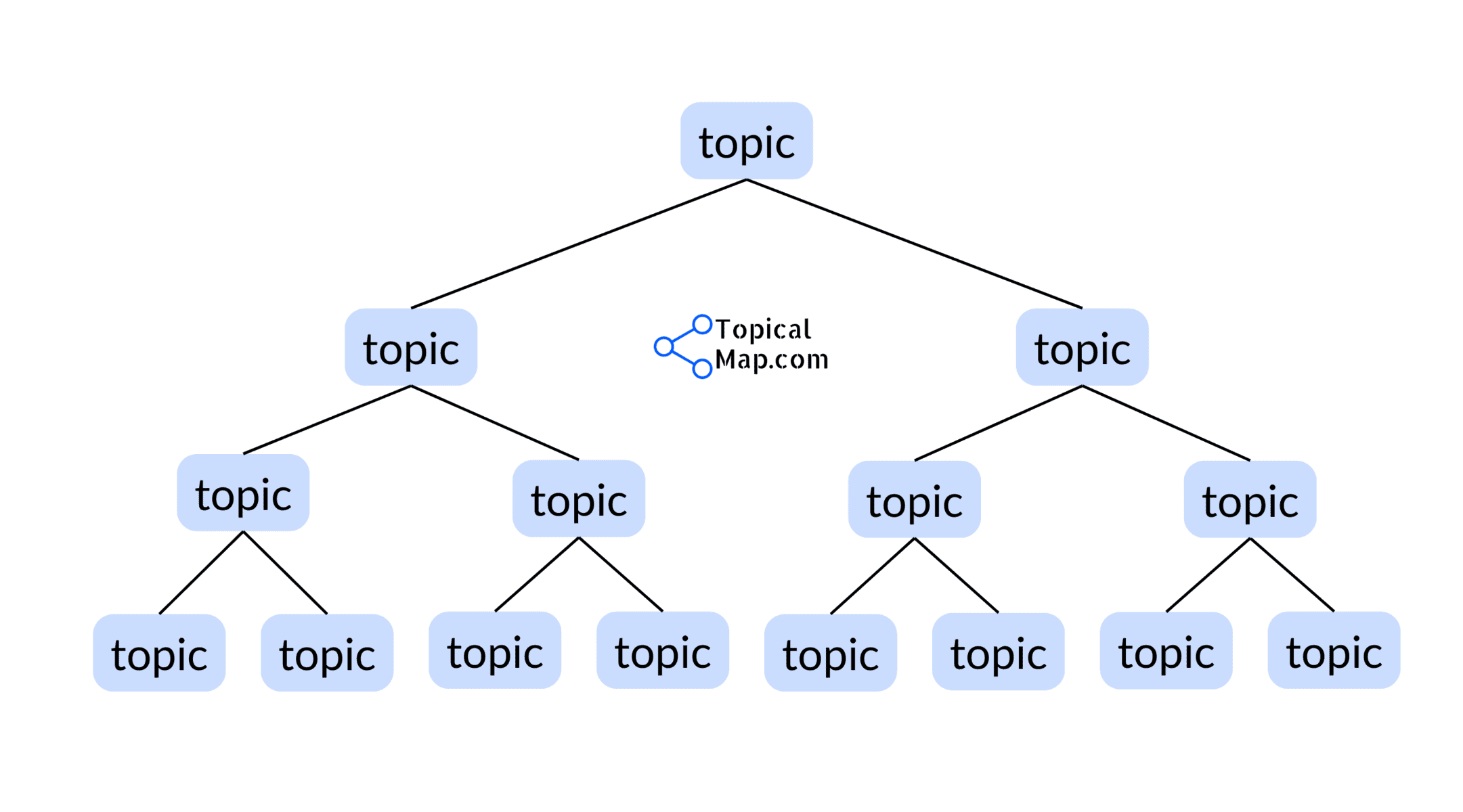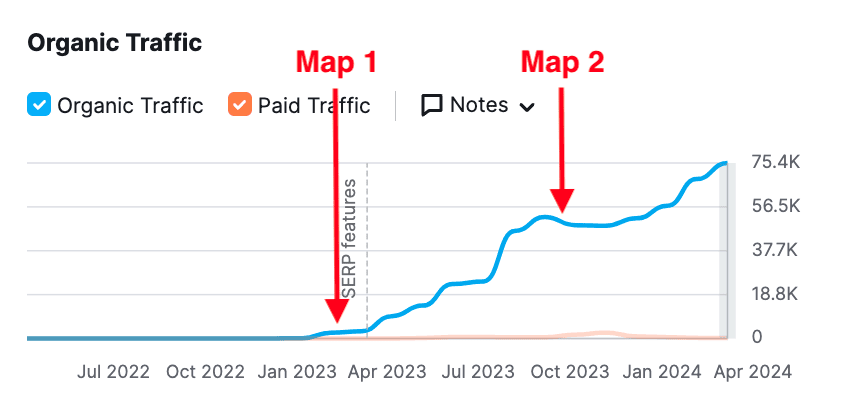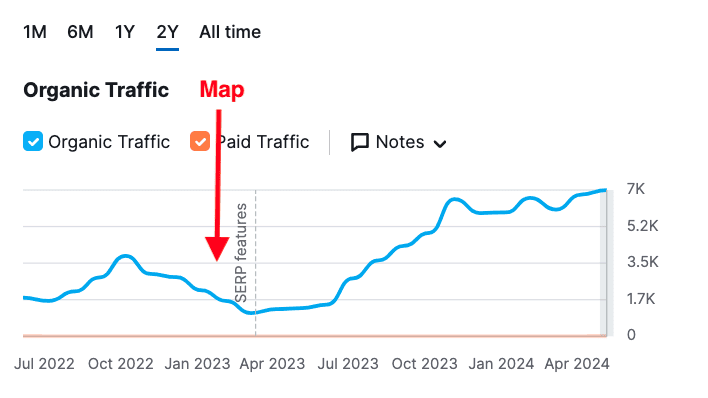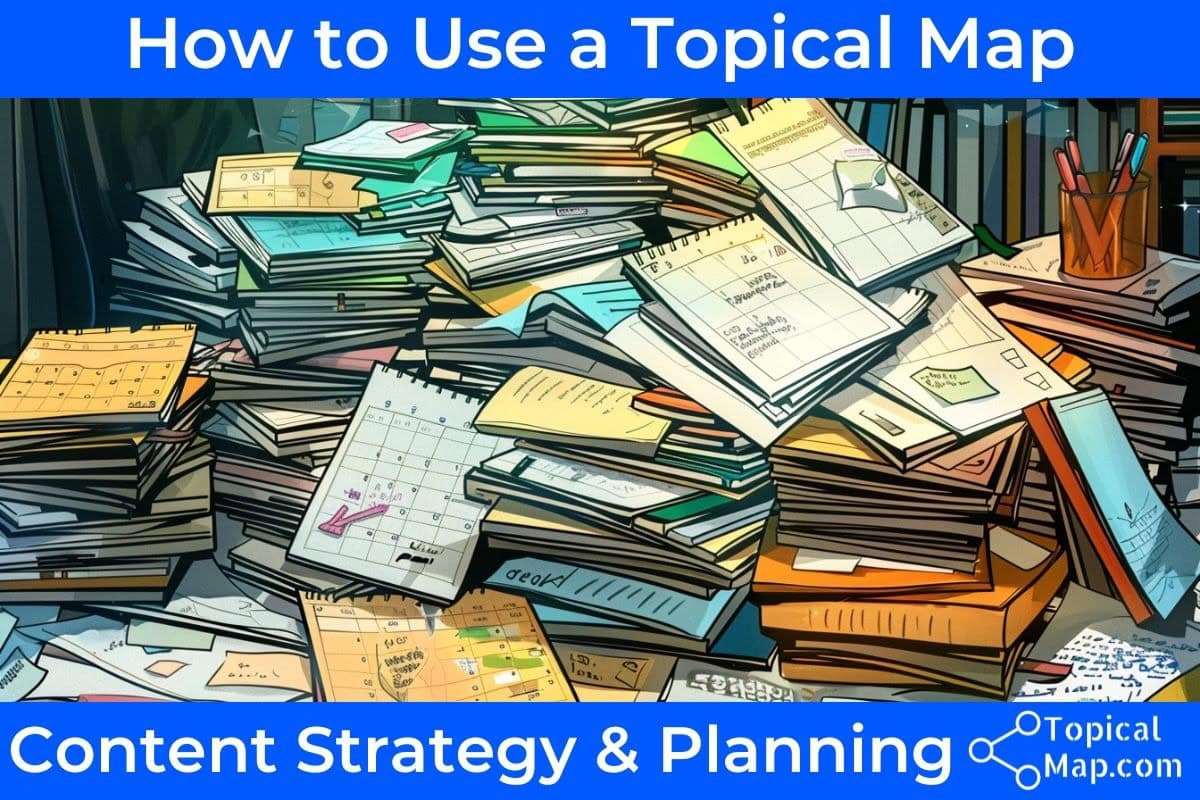Ever feel like your content strategy is all over the place? Topical maps can change that. They help you see the big picture and organize your content effectively. By using topical maps for content planning, you can boost your SEO and create a cohesive content strategy that works.
We will cover the benefits of using topical maps, including how they help with SEO and content organization. You’ll learn how to integrate topical maps into your content strategy and plan your content calendar. We’ll also share best practices and tips for using topical maps.
Ready to transform your content strategy? Keep reading to discover how topical maps can make your content planning more efficient and effective. Let’s explore topical maps and how they give you an edge in the digital world.
What Are Topical Maps?
Topical maps are blueprints for your content. They help you see the big picture of your content strategy. Think of them as the foundation of your eventual content map that shows all the topics you want to cover.
Topical maps play a big role in your content strategy. They help you organize your content in a way that makes sense for your readers and search engines. When you use a topical map, you can see how all your content pieces connect. This makes it easier to plan new content and update old content.
Here are some of the main benefits of using topical maps:
- Show Relationships: Topical maps reveal the relationships between different topics.
- Identify Gaps: They help you find gaps in your content.
- Content Planning: They make it easier to plan your content calendar.
There’s a common misconception that a topical map is just a list of topics or keyword clusters. Topical maps are actually made up of hundreds to thousands of keyword clusters because clusters focus on one topic, usually as one article.
Topical maps organize all those clusters into a topical hierarchy. That helps you easily make your content more organized and effective. That clear hierarchy makes it easier for search engines and users to understand the information and their relationships.
Topical maps are a must-have tool for any SEO and content strategist. If you want to create a content plan that works, you need to start with a topical map.

Benefits of Using Topical Maps for Content Planning and Strategy
Topical maps help you organize and plan your content better by showing you the connections between topics. This makes it easier to plan and create content that fits together.
When you use a topical map and content map together, you can see what topics you need to cover to help you decide how best to deliver that information to your target audience to convert them.
Topical maps also have big SEO advantages. They help search engines understand your content better to improve your rankings. When your content is well-organized, search engines can easily see the relationships between topics. This helps them index your pages more effectively.
Here are some key benefits of using topical maps for content planning:
- Better Organization: Topical maps help you organize your content logically. You can see how all the pieces fit together.
- Spotting Gaps: They make it easier to find gaps in your content, so you know what new content to create.
- Improved SEO: By showing clear topic relationships, topical maps help search engines understand and index your content better.
Understanding the importance of content planning in topical maps is crucial. They provide a roadmap for your content strategy. By using topical maps for SEO content planning, you can create a more effective and organized content plan.
Implementing Your Topical Map into Your Content Strategy
Integrating a topical map into your overall content strategy is key to creating a cohesive and effective content plan. It helps you see how all your content fits together.
Here’s how to use a topical map in your content strategy:
- Align with Goals: Make sure your topical map matches your content goals. Each piece of content should support your overall strategy.
- Internal Linking: Link related articles to create a network of content. This helps readers and improves SEO.
- Topical Content Hierarchy: Organize your content from broad to specific topics. This makes your site easier to navigate.
We always start by aligning your topical map with your brand and content goals. This ensures that every piece of content supports your overall brand strategy.
Internal linking is an important part of using topical maps. Link related articles to each other. This helps readers find more information and improves your SEO. When you create a network of linked content, search engines see your site as more valuable and organized.
A good topical hierarchy is also crucial. Organize your content from broad topics to more specific ones. This makes it easier for both readers and search engines to navigate your site.
You are leading them from one piece of content to another piece of content through their topical relationship. That also increases a user’s time on site, which helps your search visibility.
Using a topical map ensures that your content strategy is organized and effective. It helps you see the big picture and make informed decisions about what content to create and how to connect it.
Using Topical Maps for Content Planning
Topical maps simplify content planning by providing a logical, hierarchical structure of topics. There’s no need to do more research each time to think “what do we write about next?”
Topical maps also show you the relationships between the topics, so that makes your internal linking easier too. You just need to select the topics you want to cover in your content plan.
Next is to align your topical map with your content calendar. This means deciding when to publish each piece of content. It ensures your content is timely and relevant. Your content calendar should reflect your overall strategy, helping you stay organized and on track.
Make sure your topical map also fits with your editorial plans too. This ensures consistency in your messaging and branding.
Here’s a step-by-step guide on how to use topical maps for content planning:
- List Topics: Start by listing all the topics you want to cover.
- Organize Topics: Arrange these topics into a logical structure.
- Align with Calendar: Sync your topical map with your content calendar to plan when to publish each piece.
- Integrate with Editorial Plan: Ensure your topical map fits with your editorial plans for consistent messaging.
Using topical maps can transform your content planning process. Leveraging topical maps for content planning helps you create a cohesive and strategic content plan.They provide a clear roadmap and help you stay organized, ensuring your content is always relevant and on point.
Case Studies of Successful Topical Map Implementation
Real-world examples can show how powerful topical maps can be for content strategy. Let’s look at a few success stories of TopicalMap.com clients and their businesses that have successfully implemented topical maps to boost their content planning and SEO.
Client 1 Case Study: New SaaS Orders Two Topical Authority Maps
At the time of engagement, the B2C client was launching their new SaaS product and website, with zero content available. To establish a strong online presence, they ordered a Topical Authority Map Package, which included expert SERP and content analysis, SEO-optimized title recommendations, competitive difficulty assessments, and more.
The first Topical Authority Map was created for a core topic seed. This comprehensive map provided the client with a clear content strategy, including the types of content to create and their SEO potential. The results were immediate and positive, setting the client on the right path.
A few months later, impressed by their initial success in the SERPs, the client ordered a second Topical Authority Map for another core topic seed. This strategic move further bolstered their content strategy and online visibility.
Despite the challenges from recent Google updates, the client’s organic traffic continued to rise. This sustained increase in organic traffic led to a 10x growth in customer acquisition.

Client 2: Existing SaaS Revamps Content Strategy With Topical Authority Map and Content Audit
This SaaS client already had a successful product with solid Monthly Recurring Revenue (MRR). However, they recognized the need to revamp their content strategy to sustain and enhance their growth. To achieve this, they ordered a Topical Authority Map Package from our team.
Beyond just ordering the Topical Authority Map, the client engaged our team for a thorough content audit. The goal was to evaluate their existing content and determine the best course of action: whether to leave it as is, update it, or remove it.
Our topical map, content audit, and content plan process:
- Topical Map (Authority Package): We created a topical map that covered their services and all the main topics and subtopics. This included our SERP and content analysis for all the topics,.
- Content Audit: We conducted an in-depth audit of their existing content, assessing its relevance, performance, and alignment with the new topical map.
- Internal Linking Revamp: Using the topical map, we revamped their internal linking structure to enhance site navigation and SEO. This ensured that all content pieces were interconnected in a way that supported the overall content strategy.
- Content Plan: Using the topical map and audits, we laid out an expansive content plan for the client to follow.
By leveraging a Topical Authority Map and a thorough content audit, the client successfully revamped their content strategy, optimized their existing content, and enhanced their SEO performance, ensuring continued organic growth.
Even though the organic traffic isn’t high due to their specific industry and B2B services, the strategy accounted for this. When creating your topical maps, you must tailor it to the target audience.

Learn more about why TopicalMap.com has the best service.
Best Practices and Tips for Using Topical Maps
Simply having a topical map in your hands isn’t enough. You need to learn how to use it. Here are some best practices and tips to help you make the most of your topical maps.
1. Regularly Review and Update Your Topical Map
Maintaining and updating your topical maps is key to a successful content strategy. Keep your topical map up to date by reviewing it every few months. Add new topics and remove outdated topics as your industry evolves. Regular topical map updates ensure your content stays fresh and relevant.
- Review Regularly: Check your topical map every few months to keep it current. The faster your industry or niche moves, the more often you need to review it.
- Add New Topics: Include trending or relevant topics as they emerge. Stay up-to-date through industry newsletters, RSS feeds, Google Trends, and other sources.
- Remove Outdated Topics: Delete topics that are no longer relevant to your audience. You can 301 redirect them to more updated information.
2. Leverage Topical Maps for SEO
Leveraging topical maps can help you stay ahead in SEO. Improve your rankings and drive more traffic. Use them to identify content gaps and opportunities. This can help you create content that meets your audience’s needs. Also, use topical maps to plan internal linking. This improves your site’s navigation and SEO.
- Identify Content Gaps: Use your topical map to find gaps in your topics and content. Create new pieces to fill these gaps.
- Plan Internal Linking: Link related articles to improve site navigation and SEO.
- Use Clear Hierarchies: Organize content from broad to specific topics for better search engine indexing. Keep your topics and subtopics clearly defined and organized.
3. Content Planning Best Practices Using Topical Maps
Here are some content planning best practices using topical maps:
- Align with Goals: Make sure your topical map aligns with your content goals. Each piece of content should support your overall strategy.
- Engage Your Audience: For each topic plan to create content that addresses the needs and interests of your audience.
- Use Actionable Steps: Break down your content planning into clear, actionable steps using the map. Easily lay out the content schedule with your map.
4. Monitor Content and Site Performance
Tracking the performance of your content and site is essential for continuous improvement. Use analytics tools to measure key performance indicators (KPIs) and adjust your strategy based on the insights you gather.
- Track KPIs: Monitor metrics such as page views, bounce rates, engagement rates, and conversion rates to understand how your content is performing. You can use the free GA4 to track these user metrics.
- Analyze and Adjust: Use the data to identify what’s working and what’s not. Adjust your topical map and content strategy accordingly. Refer back to your goals and audience details.
- Feedback Loop: Implement a feedback loop where you continuously refine your topical map based on performance data and audience feedback.
By following these best practices and tips, you can effectively use your topical maps to plan, create, and optimize content that resonates with your audience and achieves your business goals.
See some of the Case Studies of Content Planning with Topical Maps.


